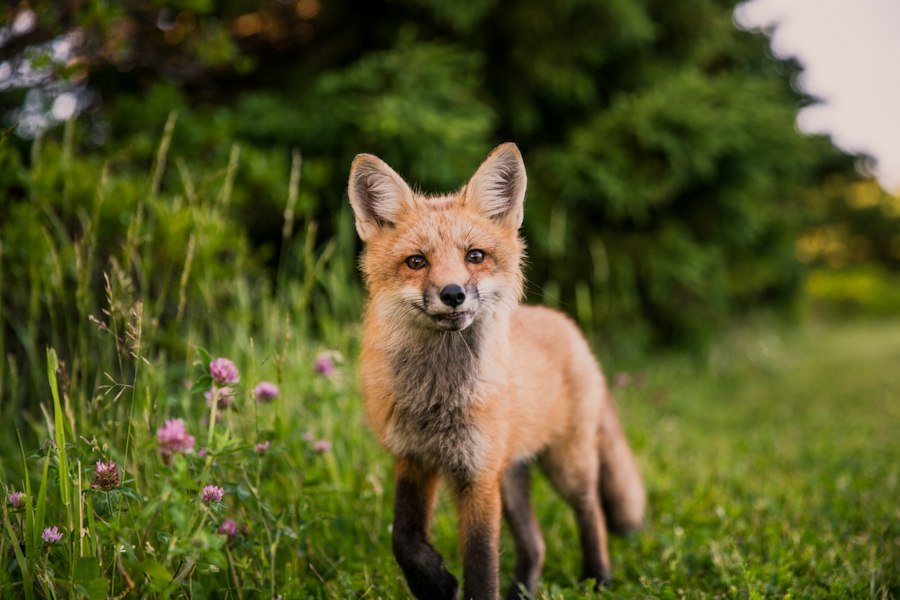

How to Talk About Wildlife Conservation in Spanish: 25 Environmental Terms
Wildlife conservation is of utmost importance in preserving the delicate balance of ecosystems and protecting the biodiversity of our planet. It involves the management and protection of animal and plant species, their habitats, and the ecosystems they rely on. In Spanish-speaking countries, wildlife conservation is a crucial issue that requires attention and action. This article will explore the key environmental terms related to wildlife conservation in Spanish, the concept of biodiversity, threats to wildlife, habitat loss and fragmentation, climate change, strategies for protecting endangered species, the role of national parks and protected areas, advocating for wildlife conservation, and resources for learning more about this topic.
Table of Contents
ToggleKey Takeaways
- Wildlife conservation is important for protecting biodiversity and preserving ecosystems.
- Key environmental terms, such as habitat, ecosystem, and biodiversity, are essential for discussing wildlife conservation.
- Biodiversity is crucial for maintaining a healthy planet and supporting human well-being.
- Threats to wildlife in Spanish-speaking countries include habitat loss, poaching, and climate change.
- Habitat loss and fragmentation are major challenges for wildlife conservation in Spanish-speaking countries.
Key Environmental Terms
To effectively discuss wildlife conservation in Spanish, it is important to understand key environmental terms. Some important terms include:
1. Conservación de la vida silvestre – Wildlife conservation
2. Especies en peligro de extinción – Endangered species
3. Hábitat – Habitat
4. Ecosistema – Ecosystem
5. Biodiversidad – Biodiversity
6. Especies nativas – Native species
7. Especies invasoras – Invasive species
8. Contaminación – Pollution
9. Deforestación – Deforestation
10. Cambio climático – Climate change
These terms are used in the context of wildlife conservation to discuss the various aspects and challenges associated with protecting and preserving wildlife and their habitats.
Biodiversity
Biodiversity refers to the variety of life on Earth, including all living organisms from plants and animals to microorganisms. In Spanish, biodiversity is translated as “biodiversidad.” Biodiversity is crucial for wildlife conservation as it ensures the stability and resilience of ecosystems. It provides essential ecosystem services such as pollination, nutrient cycling, and water purification.
Biodiversity also plays a vital role in maintaining genetic diversity within species, which is essential for their long-term survival and adaptation to changing environments. In Spanish-speaking countries, biodiversity is rich and diverse, with unique species found in various ecosystems such as rainforests, deserts, and coral reefs. Protecting and conserving biodiversity is essential to ensure the survival of these species and maintain the health of ecosystems.
Threats to Wildlife
Spanish-speaking countries face numerous threats to wildlife conservation. These threats include habitat loss, illegal wildlife trade, pollution, climate change, and invasive species. These threats have severe consequences for wildlife populations and can lead to the extinction of species.
Habitat loss is one of the most significant threats to wildlife in Spanish-speaking countries. It occurs due to deforestation, urbanization, agriculture, and infrastructure development. As natural habitats are destroyed or fragmented, wildlife populations lose their homes and struggle to find suitable areas for feeding, breeding, and shelter. This loss of habitat can lead to population declines and even extinction.
Illegal wildlife trade is another major threat to wildlife conservation in Spanish-speaking countries. It involves the illegal hunting, capturing, and trading of protected species for their body parts or as exotic pets. This trade not only threatens the survival of endangered species but also disrupts ecosystems and contributes to the spread of diseases.
Habitat Loss and Fragmentation
Habitat loss and fragmentation are significant issues in wildlife conservation that have severe consequences for biodiversity. In Spanish, habitat loss is translated as “pérdida de hábitat,” while habitat fragmentation is translated as “fragmentación de hábitat.”
Habitat loss occurs when natural habitats are destroyed or converted for human activities such as agriculture, urbanization, or infrastructure development. This loss of habitat directly impacts wildlife populations by reducing their available space and resources. It can lead to population declines, increased competition for resources, and even extinction.
Habitat fragmentation refers to the breaking up of large continuous habitats into smaller, isolated patches. This fragmentation can occur due to the construction of roads, dams, or other barriers that disrupt the natural connectivity of ecosystems. Fragmented habitats are more vulnerable to the negative effects of habitat loss, as they become isolated and unable to support viable populations of wildlife. This can lead to genetic isolation, reduced biodiversity, and increased vulnerability to other threats.
Climate Change

Climate change is a global issue that affects wildlife populations in Spanish-speaking countries and around the world. In Spanish, climate change is translated as “cambio climático.” Climate change refers to long-term shifts in temperature and weather patterns caused by human activities, primarily the burning of fossil fuels and deforestation.
Climate change has a profound impact on wildlife populations as it alters their habitats and disrupts their natural life cycles. Rising temperatures can lead to changes in migration patterns, breeding seasons, and food availability. This can result in mismatches between species and their resources, leading to population declines or even extinctions.
In Spanish-speaking countries, climate change poses significant challenges for wildlife conservation. For example, rising temperatures and changing rainfall patterns can lead to the loss of critical habitats such as coral reefs or cloud forests. These unique ecosystems are home to numerous species found nowhere else on Earth and are highly vulnerable to climate change impacts.
Strategies for Protecting Endangered Species
Protecting endangered species is a crucial aspect of wildlife conservation in Spanish-speaking countries. Various strategies are employed to safeguard these species and ensure their long-term survival. Some of these strategies include:
1. Protected areas: Establishing protected areas such as national parks, reserves, and wildlife sanctuaries where endangered species can thrive without human interference.
2. Conservation breeding programs: Breeding endangered species in captivity to increase their population numbers and reintroduce them into the wild.
3. Habitat restoration: Restoring degraded habitats to provide suitable environments for endangered species.
4. Law enforcement: Enforcing laws and regulations against illegal hunting, poaching, and wildlife trade to protect endangered species from exploitation.
5. Public awareness and education: Educating the public about the importance of protecting endangered species and their habitats to gain support for conservation efforts.
These strategies have been successful in protecting and recovering endangered species in Spanish-speaking countries. For example, the conservation efforts for the Iberian lynx in Spain have led to a significant increase in its population numbers, saving it from the brink of extinction.
National Parks and Protected Areas
National parks and protected areas play a crucial role in wildlife conservation in Spanish-speaking countries. These areas are designated to protect unique ecosystems, biodiversity hotspots, and endangered species. In Spanish, national parks are referred to as “parques nacionales” or “áreas protegidas.”
National parks and protected areas provide safe havens for wildlife by preserving their habitats and limiting human activities that could harm them. These areas also offer opportunities for scientific research, environmental education, and ecotourism, which can generate income for local communities while promoting conservation.
In Spanish-speaking countries, there are numerous successful examples of national parks and protected areas that have contributed to wildlife conservation. For instance, the Galapagos Islands in Ecuador are a UNESCO World Heritage site and a national park that protects unique species found nowhere else on Earth. The park’s strict regulations and management practices have helped preserve its biodiversity and ensure the survival of iconic species such as the Galapagos giant tortoise.
Advocating for Wildlife Conservation
Advocacy plays a crucial role in promoting wildlife conservation in Spanish-speaking communities. By raising awareness, mobilizing support, and influencing policies, individuals can make a significant impact on protecting wildlife and their habitats. Here are some tips for advocating for wildlife conservation in Spanish-speaking communities:
1. Educate yourself: Learn about the key issues and challenges facing wildlife conservation in Spanish-speaking countries to effectively advocate for change.
2. Raise awareness: Use social media, community events, and educational campaigns to raise awareness about the importance of wildlife conservation and the threats facing endangered species.
3. Support local initiatives: Get involved in local conservation organizations and initiatives that are working to protect wildlife and their habitats.
4. Engage with policymakers: Write letters, sign petitions, and attend public meetings to advocate for stronger laws and regulations that protect wildlife and their habitats.
5. Promote sustainable practices: Encourage sustainable practices such as responsible tourism, sustainable agriculture, and renewable energy to reduce the impact on wildlife and their habitats.
Successful advocacy efforts have led to positive changes in wildlife conservation in Spanish-speaking countries. For example, the campaign to ban single-use plastic bags in Costa Rica was a result of grassroots advocacy efforts that raised awareness about the harmful effects of plastic pollution on wildlife.
Resources for Learning More
There are numerous resources available for learning more about wildlife conservation in Spanish. These resources include websites, books, documentaries, and educational programs. Here are some recommendations:
1. Websites:
– WWF España (https://www.wwf.es/)
– Fundación Vida Silvestre Argentina (https://www.vidasilvestre.org.ar/)
– Ministerio del Ambiente de Ecuador (https://www.ambiente.gob.ec/)
2. Books:
– “Conservación de la vida silvestre en América Latina” by Rodrigo A. Medellín
– “Biodiversidad y conservación en América Latina” by Jorge Soberón
3. Documentaries:
– “Amazonas: El camino de la cocaína” (Amazon: The Cocaine Trail)
– “Galápagos: El paraíso en peligro” (Galapagos: Paradise at Risk)
In conclusion, wildlife conservation is a critical issue that requires attention and action in Spanish-speaking countries. Understanding key environmental terms, such as biodiversity, habitat loss, and climate change, is essential for effective communication and advocacy. By implementing strategies for protecting endangered species, establishing national parks and protected areas, and advocating for wildlife conservation, we can make a significant impact on preserving the rich biodiversity of Spanish-speaking countries. It is our collective responsibility to protect wildlife and their habitats for future generations. Get involved, raise awareness, and take action to ensure a sustainable future for all species.
If you want to learn Norwegian, you can register for classes here. We look forward to hearing from you and helping you become fluent in Norwegian.





